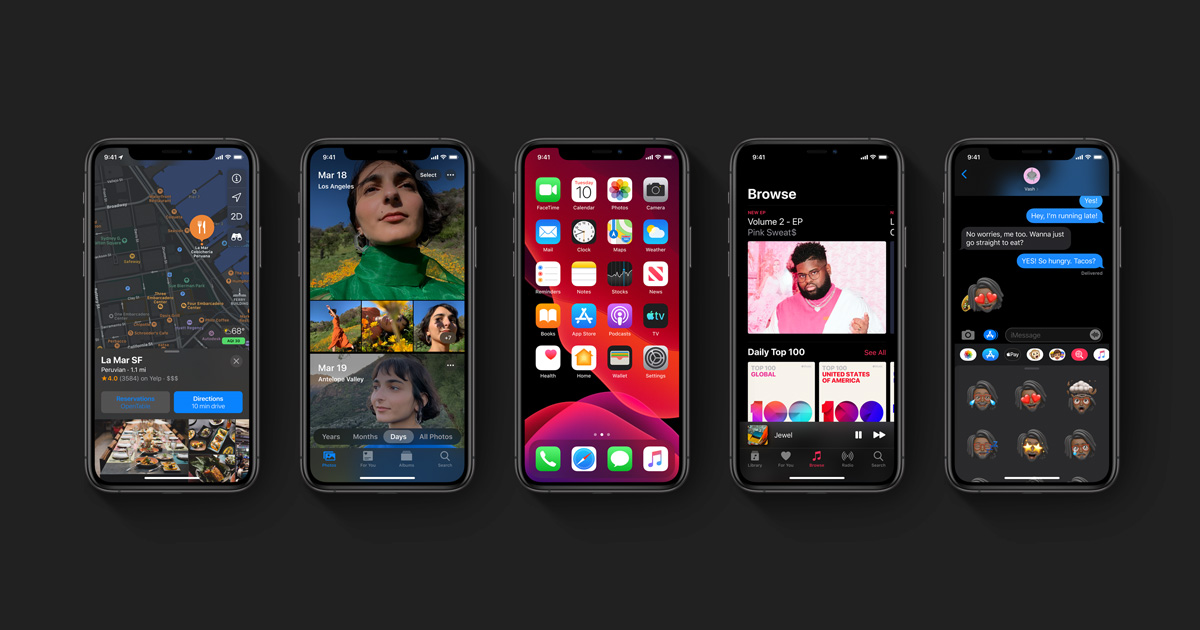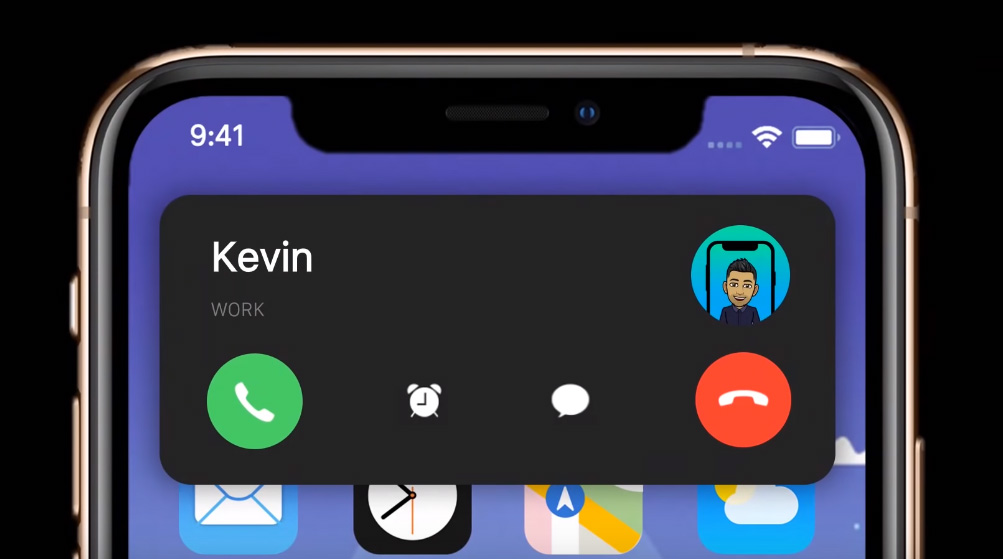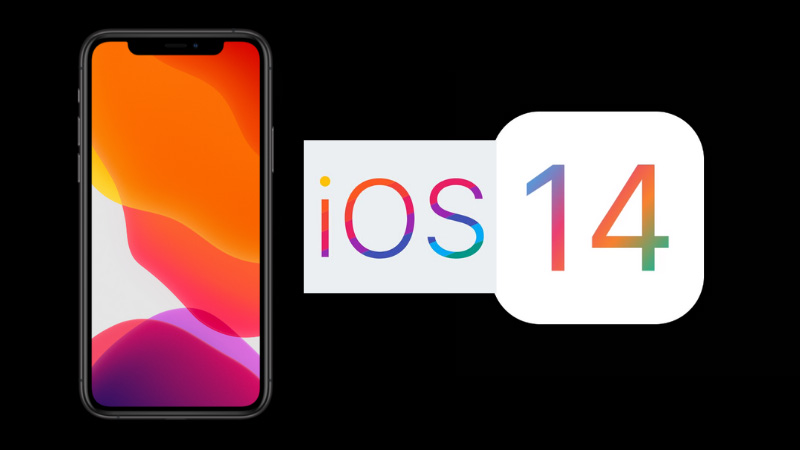iOS 13 was undoubtedly a buggy experience for every Apple user out there. This resulted in Apple pushing several updates in a short internal interval of time to keep it bug-free. However, there are still bug reports unattended by Apple. Amidst all this, how will iOS 14 (iPhoneOS 14) enter the market?
iOS 14: Apple’s Operating System
iOS 14 is the upcoming fourteenth iOS mobile operating system developed by Apple Inc for its iPhone lineup. Recent reports have come in about the iOS 14, and if they are true, then we can expect better with this new OS update. This time, Apple will not wait for the bugs to show up; rather, it will just push out a polished version of iOS. But what does it result in terms of release date? Will we see a late OS update from Apple this time around? Will we see a worthy amount of upgrades over the older OS? Will it just be a performance boost on the iOS 13? Yes, iOS 13 came with dark and photos app enhancements, two welcome iOS changes. So, will there be something similar this year around, too? Let’s take a detailed look at the upcoming iOS version to get answers to these persisting questions lying around.

Latest News
June 22: iOS 14 is now official. It brings a fresh look to the things you do most often, making them easier than ever. You can read the complete features here.
June 18: With the new iPhoneOS, Apple will include a “For You” tab, which suggests new songs, artists, and playlists to the Podcasts app.
June 2: Two new features, “Built-in translator in Safari” and “Apple Pencil support on websites,” have been spotted by 9to5Mac on an early build of iOS 14.
April 9: Apple may bring a new feature with iOS 14 called “Clips,” allowing users to experience a partial app by scanning a QR Code. That means you can use parts of an app’s functionality without a full download.
April 5: iOS 14 may ship with new Home Screen Widgets that implement widgets right on the Home screen. Also, screenshots of the new Wallpaper settings have been leaked, which reveal the “Home Screen Appearance” option and a new Collections menu that allows users to populate their photos.
March 23: Apple Find My app in iOS 14 will include new features such as AR mode that will locate AirTag trackers and a new notification trigger, allowing users to be notified when someone doesn’t arrive at a location on time.
March 11: With iOS 14, we may see the biggest change to the Home screen. It is rumored that Apple will bring a new Home screen layout allowing users to arrange icons in a list with Siri Suggestions.
March 10: In the upcoming iOS 14 for HomeKit, we may see a feature that will automatically adjust the light color temperature throughout the day. Also, a new face classification feature might be added to the HomeKit camera.
March 9: Apple may bring rich system-wide support for mouse cursors with the next generation of iOS.
March 8: “Blood oxygen Detection” feature for Apple Watches spotted in iOS 14 code snippets.
When will iOS 14 be released?
- iOS 14 will likely be announced on June 22 at its annual World Wide Developers Conference (WWDC). The WWDC 2020 will be an online-only event that will take place between June 22 to 26.
Apple is very traditional about its big iOS, iPadOS, and macOS updates. Every time around, they follow a general pattern of unveiling the big software update in the WWDC event, which is held every year around June. We can expect something similar this year. Here, Apple officially pulls the curtains on their new OS version and officially launches it for the developers. The developers work on this new OS version to see if all the applications run fluently without any breakdowns or crashes. During this initial stage, around the unveiling time, only developers can try out and check all the new features. Now, some eager Apple fans can also use the new OS before it is made available to everyone but only as a beta user. That is, Apple pushes out a Public Beta update of the new iOS after the developers have completed their initial tests on the OS. If everything seems to work fine, Apple pushes out the Beta update. Now, the Beta version users act as test subjects for Apple and the developers to try and find new bugs that are troubling the users.
Once all these bugs are cleared out, the iOS official update version is pushed out in Q3 or Q4 of the year. This time of the year is the time when Apple also removes the curtains from their next iPhone. With the launch of the new iPhone series, Apple also launched the official new iOS, macOS, and iPadOS to its users. This is not the version, but the actual official version pushed out to every Apple user around the globe, given that their device supports the new update.
Which iPhones will receive the iOS 14 Update?
Apple follows a tradition of providing updates for five years for their iPhones. We have already seen iPhone 6 lose out on the iOS 14 updates. If this holds, then this is the end of the line iPhone 6s devices. The iPhone 6s model came out back in 2015, and by the time the iOS 14 stable version officially launches in Q3 of 2020, it will be five years old, which means that iOS 14 will only roll out to devices launching later than 2015 that is, models launching in the following years.
So, the probable list of iPhones that will be receiving the iOS 14 updates are:
- iPhone SE
- iPhone SE 2020
- iPhone 7
- iPhone 7 Plus
- iPhone 8
- iPhone 8 Plus
- iPhone X
- iPhone XR
- iPhone XS
- iPhone XS Max
- iPhone 11
- iPhone 11 Pro
- iPhone 11 Pro Max
You can check here if your phone is eligible for the latest iOS update.
How will the new Apple OS perform?
iOS 13 was buggy. Apple had to push nearly eight OTA updates to fix screen stutter issues, app crashing issues, missing feature issues, etc. You don’t expect this from Apple, which labels itself as an exclusive brand promising the best out of its devices and charging a bucket load of money to deliver this promise. Yes, iOS surely is one of the best OS built for a smartphone, but what good can that do if there is always a bug popping up here and there? Now, Apple is well aware of its failure with iOS 13 and is opting for a completely different approach for developing the iOS 14.
Now, what Apple will do here is they will introduce software flags in daily iOS builds. This will act as a filtration system for the company to select out bad sections in codes even before they make it out to the public. This is not a revolutionary approach by any means, though, as top-tier companies like Google and Microsoft have already been following this fail-safe system of software development for their OS updates.
Another thing that worries a lot of Apple customers is whether or not the update will be a significant one. In the past, we have seen Apple prioritizing performance over features. This was quite evident with the iOS 12 update, which was more like a performance boost over the iOS 11. Even in the following iOS 13, we only saw a handful of new features added to the OS, with the system-wide dark mode taking the limelight. These last couple of iOS updates from Apple have been quite the opposite of what we were accustomed to seeing with iOS updates. Back in the early days, Apple pushed out revolutionary updates that changed the entire persona around smartphones for everyone. But that’s not the case anymore.
So Apple users are expecting that this year, besides improving on the existing OS performance, Apple keeps an eye on providing some exciting new feature updates. You can also learn about the upcoming iPhone 12’s A14 Bionic processor from here.
iOS 14 features: What can we expect?
As of now, nothing is there at all. Not even a single rumor about a probable feature. This is quite expected since there is still a long time to go for the OS to launch, even unofficially. But there have been a few concept videos circling about always-on-display functionalities, changed icon packs, and much more. So, let’s take a look at what might be in store for us in the new iOS version.
Call notifications through the banner.
Gone are those days when a call was the sole purpose of a phone. Now, a smartphone is a media device. But ever since 2007, iPhone incoming call notifications have always taken up the entire screen to inform the user about an incoming call. It doesn’t matter what the user is doing on his phone; as soon as a call comes, the entire screen pulls up the notification.
There have been times when people have not appreciated the full-screen notification and are therefore hoping for an update that fixes that. Instead of taking up the entire screen, a phone call could simply just take a banner-shaped notification at the top, with an accept or decline feature. This is a feature we already see on Android phones, and it is convenient if someone is streaming a video or doing something that is urgent and cannot wait(like carrying out bank transactions). In such a scenario, a full-screen notification can prove to be quite disturbing.

A better notification screen:
The notification screen from Apple now looks more and more like the lock screen. For some reason, time is displayed on the notification screen, and that, too, takes up a lot of space. This is quite unnecessary since there is always an indicator on the top-right part of the screen for the time. So rather than displaying the time, Apple users want a better, cleaner approach. Additionally, most users also miss out on how the notification screen before was just a transparent screen in the background. Still, with more and more updates, the notification screen has started to look more like a lock screen.
Another aspect that troubles the current iOS users is the fact that there is no grouping of notifications anymore. This feature was there in the earlier iOS versions, but not anymore. Now, whenever there is a notification from several apps, several times, depending on the time the notification pops up, it is placed on the notification screen. Now, all this means is that if you will have a chunk of notification covering up the notification screen and if you want to clear just the notification from a particular app, say Whatsapp, you have to do it for every notification from Whatsapp. And if you want all your WhatsApp notifications to go out altogether, then you have to clear out the notifications from all the other apps, too.
The apps update tab is gone:
An update that left a lot of Apple enthusiasts confused about their application update feature found in the app store was seen on the iOS 13. It’s not that we can no longer check which apps need an update; we just can’t access it directly like we used to. Now you can use tap and hold on to the App Store icon, and the update apps option will pop up. Or you might even tap on your profile in the app store, and you will see the update option there. So overall, it is fine, but some people who are not that immersive with their devices might find it difficult to update their applications.
With the future update, if Apple returns the update tab, then all will be well, and everyone will have no issues updating their apps whenever they need or want to.
Extended Animoji videos:
Animojis have been extremely popular since their launch with the iPhone X in 2017. It allows users to send an animated version of themselves over to their friends and family through messages and even on social networking sites. But there remains a question still as to why this feature is only limited to the camera function in the messaging app. Why not the default camera app, which might result in really longer extended videos?
Back in 2017, when Animoji was fresh out from Apple’s R&D team, the concept of just limiting to the messaging app made sense. It meant shorter videos, less processing, fewer codes, and hence fewer bugs. Longer videos will need an extra bit of development. Back then, it didn’t make sense, but now, three years later, in 2020, Apple users expect the tech giant to develop this much-loved feature from Apple even more. They want to see what else is possible, and if Apple delivers on that, it will be much appreciated by all.
Better Clock app:
This is nitpicking, and as of now, the clock app on iOS works perfectly fine, but there are a few things that Apple can do to make the experience even better with its iOS 14.
Firstly, the Bedtime routine feature is a nice feature to have if you have a daily routine life at home and work. You need to wake up for work at a specific time, so you need to sleep at a good time. But what if you work from home or you are on leave? What then? Yes, you can manually change the bedtime routine whenever required, but it would be more convenient if this feature was automated. We will no longer need to tweak the bedtime routine feature for every single day that we don’t have to go to work.
Secondly, a small feature might allow the users to snooze alarms off for a day, week, or month. Yes, this can be done manually by turning the alarm feature on and off whenever you need it and whenever you don’t. But if you are returning from a holiday, you turned your alarm feature off when the vacation started, and now, the next day, you fail to reach the office in time. Since the alarm feature automatically rings every working day, once you turn it on, it kind of becomes like a forgotten feature for many. So, the best thing here would be to have the ability to snooze the alarm feature for a particular amount of time. Yes, this is a very tiny bit of update, but it’s an update that a lot will appreciate.



